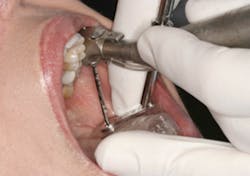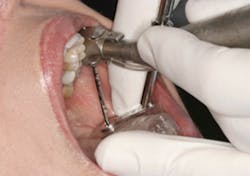Should You Sell The Accounts Receivable In A Practice Transition?
By Edward R. Esposito, MBA
Although opinions are divided on selling accounts receivable (A/R), a strong argument for “yes” is that it’s a good idea if both parties agree and the price is carefully evaluated. The reasons for transitioning the accounts receivable are related to supporting a seamless transition for the selling doctor, the buying doctor, and the patients. From the patients’ perspective, it is much easier to receive one rather than two separate bills from the practice (one from the seller and one from the buyer). It is also a chance for the buyer to communicate with patients regarding something attractive about the practice transition or a special clinical offer.
From the seller’s perspective, it is a clean ending financially speaking. With the A/R included in the transition, all of the payments coming to the practice, whether over the counter or through the mail, belong to the buyer. The seller may only have to endorse a few checks from time to time. Most banks will accept documentation from the purchase agreements, the bill of sale, or general conveyance. These allow the buying dentist to deposit endorsed checks made out to the previous owner.
In any practice, accounts receivable collection has inherent costs associated with processing. There are many line items, but the major ones are: electronic statements or paper statements, electronic claims (or in rare cases manual insurance claims), postage, labor, phone calls, secondary insurance submission, and communication time with patients or account holders. Most studies show this internal collection cycle costs anywhere from 5% to 12%. This is a reasonable range. Some studies purport a cost of 15%, but too many fixed overhead costs are added to the equation. If an average of 9% is used for processing and a national average of an uncollectable debt percentage of 3% is used, the argument can be made that the seller or the buyer will spend approximately 10% to collect A/R. If a convenience fee of 5% is added (because it makes each of the post-transition management tasks less complicated), the total value of the A/R might be 83% of total accounts receivable on the day of closing. The credits would also be subtracted on the day of closing.
An example of the valuation of accounts receivable follows:
One more step is necessary to determine an accurate assessment of the A/R — the aging of the A/R, including an analysis of whether the account is performing (i.e., making timely payments). Most dental software does not account for payments being made; it only considers the timing of those payments. The difference between the two is “true aging” and “delinquent aging.” True aging is solely based on time, while delinquent aging is based on performance. Therefore, if an account is $1,000 and the patient is to pay $100 every month, in four months the account would be in the “over 120 day” column. However, according to most financial institutions, the account would be current for making the agreed-upon payment. This additional step to properly analyze the accounts receivable results in a win-win transition for both parties, and immediate similar cash flow for the buyer.
These are all excellent reasons to purchase the A/R in a practice. However, sometimes it just doesn’t make sense to purchase the A/R, and that will be discussed in a future article. An experienced broker can certainly guide you through what is right for your situation.
Edward R. Esposito, MBA, is a licensed broker and appraiser. As an owner of ADS Precise Consultants (www.adsprecise.com), he has provided transition consulting since 2003. He can be reached at 800-307-2537, 888-419-5590, ext. 303, or [email protected].
Past DE Issues

